Planting and caring for a garden can be a rewarding experience. Here are some tips to help get you started.
Welcome to the Green Thumb Guide, where we will explore the process of planting a garden and help you develop your green thumb! Whether you’re a seasoned pro or a beginner, gardening is a wonderful hobby that offers numerous benefits. From providing fresh produce to improving mental health, there’s a lot to love about gardening.
Before you start planting, it’s important to consider the environment in which your plants will grow. Factors such as sunlight, temperature, and soil quality can make a big difference in the health and growth of your garden. With that in mind, let’s dive into some practical tips for creating a beautiful and thriving garden.
Key Takeaways:
- Choosing the right plants for your environment is crucial for a healthy and thriving garden.
- Watering plays a big role in keeping your plants healthy, so it’s important to give them the right amount of water.
- Prepare the soil before planting by removing grass and turning the soil to aid root growth.
- Regular maintenance such as pruning and removing weeds is essential for a healthy garden.
- Good plants for beginners include Sansevieria, Succulents, Peace Lily, and African Violets.
Soaking Plant Roots and Choosing the Right Location
One crucial step in planting a successful garden is to ensure that the plant roots are properly soaked in water before planting. Soaking the roots for 2-4 hours before planting allows them to absorb water and nutrients, leading to healthy growth. It is also important to choose the right location for your plants to receive ample sunlight. Most plants require at least 6 hours of direct sunlight each day, so choose an area that is not shaded by trees or buildings. If planting trees, be sure to consider their mature size and the amount of sunlight they will need in the future.
| Task | Tips |
|---|---|
| Digging a hole | Make the hole twice as wide as the root ball and level the bottom. The hole should not be deeper than the plant’s current root ball. |
| Grass removal | Remove any grass or weeds within a 3-foot radius of the planting location to prevent competition for nutrients and water. |
When planting, be sure to dig a hole that is large enough to accommodate the plant’s current root system. The hole should be twice as wide as the root ball and level at the bottom. Avoid planting too deeply; the top of the root ball should be level with the soil. Removing any grass or weeds within a 3-foot circular area helps prevent competition for nutrients and water.
When it comes to fertilizing, be cautious. Do not add any fertilizer in the first year after planting. In the following years, fertilize between mid-April and mid-summer. It is important to keep the soil moist but not soggy, especially after planting. Water trees every 7 to 10 days during dry weather.
Regularly tending to your plants by removing weeds, pruning, and cleaning the leaves can help maintain their health. Removing dead or diseased branches can also help prevent the spread of disease. When choosing plants, consider the amount of sunlight and temperature requirements. Choose plants that are suitable for your environment to ensure their success.
The key to successful gardening is to keep the plants healthy and happy. By providing the right conditions and proper care, even those with a “black thumb” can become successful at plant care.
Section 3: Digging the Perfect Hole and Grass Removal
Once you have chosen the right location for your garden, it’s time to dig the perfect hole for your plants. Digging a hole might seem like a straightforward task, but it’s crucial to ensure the plant’s healthy growth. The hole should be large enough to accommodate the plant’s root system, allowing enough room for the roots to grow and establish themselves in the soil.
Before digging the hole, it’s essential to remove any grass within a 3-foot radius, as it can compete with the plant for nutrients and impede its growth. The soil in the area where the grass is removed should be turned to aid root growth. Once you have removed the grass, mark the spot where you plan to dig the hole.
| Digging Techniques for the Perfect Hole |
|---|
| Digging Depth: The depth of the hole should be slightly larger than the height of the root ball of the plant. The extra space will provide room for the roots to spread and grow. |
| Soil Preparation: The soil in the hole should be loosened and mixed with compost or other organic matter. This will provide nutrients to the plant, encouraging healthy growth and development. |
| Plant Placement: Place the plant in the hole, ensuring the top of the root ball is level with the soil surface. The plant should be centered in the hole, allowing enough space for the roots to spread in all directions. |
| Filling the Hole: Fill the hole with soil and any necessary amendments, such as fertilizer or lime. The soil should be gently packed to eliminate air pockets, ensuring the plant’s roots make contact with the soil. |
After planting, water the plant adequately, and mulch around the base of the plant to retain moisture. It’s crucial to avoid over-fertilizing, particularly during the first year, as it can damage the roots of the plant. Fertilize the plant cautiously, following the manufacturer’s instructions, and ensure you choose the right fertilizer for your plants.
Pruning is also essential for the plant’s long-term health. Regular pruning will help shape and control the growth of the plant, resulting in a more attractive and healthier garden. Proper care of the plant, including watering, fertilizing, and sunlight, is crucial for its optimal growth and development.
Choosing the right plants for your environment and providing them with the correct amount of sunlight and water are equally important. Planting a garden requires patience and attention, but the rewards are well worth the effort.
Fertilizing, Mulching, and Basic Garden Maintenance
Proper fertilizing, mulching, and basic maintenance are essential for the health and vitality of your garden. When it comes to fertilizing, exercise caution, especially during the first year. Avoid adding fertilizer, potting soil, or any chemicals to new trees. If fertilizing is done in the second year, it should be done in mid-April and not after mid-summer. Refill the soil with the proper amendments and spread mulch around the base of the tree, keeping it moist but not soggy.
Basic garden maintenance also includes regularly watering the plants, especially during dry weather, and pruning the trees at least once a year after the first year. Choosing plants that are suitable for your environment, providing the right amount of water and sunlight, and regularly cleaning the plant’s leaves are all part of basic garden maintenance.
When it comes to mulching, choose the right mulch for your plant and apply it to a depth of 3-4 inches. Mulch helps retain soil moisture, keeps weeds at bay, and regulates soil temperature. Organic mulch like leaves, straw, or bark also adds valuable organic matter to the soil as it decomposes.
Regular garden maintenance also includes removing dead plants and debris on a regular basis to prevent plant diseases and pests. Inspect your plants regularly for any signs of pest infestations or disease, and treat the problems immediately to prevent further damage.
By following these guidelines and staying on top of basic garden maintenance tasks, even those with a black thumb can become successful green thumbs. Remember to approach fertilizing with caution, choose the right mulch for your plants, and regularly remove dead plants and debris to keep your garden healthy and thriving.
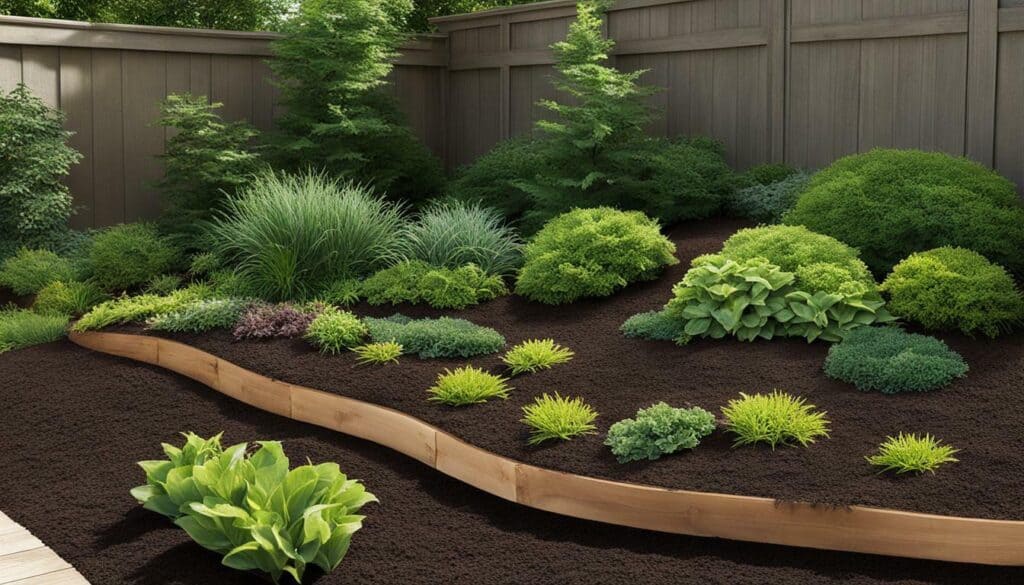
Watering Techniques for Optimal Growth
Watering your plants correctly is crucial to their overall well-being and growth. It’s important to have a solid understanding of which plants require more or less water, as well as what type of containers work best. For example, plants in smaller pots will require more frequent watering than those in larger ones. Drainage is also critical, as overwatering can lead to root rot and other plant diseases.
In terms of frequency, there is no one-size-fits-all approach to watering plants. As a general rule of thumb, it is best to water thoroughly but not too often. The goal is to allow the top inch or so of soil to dry out before watering again. To achieve this, use a watering can or hose attachment with a gentle spray.
In addition to proper watering, sunlight is just as important. Plants should be placed near windows to receive indirect light, ensuring they receive at least six hours of sunlight a day. However, too much sunlight can cause wilting and brown, crispy leaves, so be mindful of the amount of direct sunlight your plants are receiving.
Choosing the right plants for your environment is also essential. Consider factors such as sunlight, temperature, and personal care style when selecting plants for your home or garden. Some plants may require more frequent watering or a different type of soil to thrive.
Overall, proper watering and sunlight are key to achieving optimal growth for plants. By taking the time to learn about your plants’ specific needs and providing them with the proper care, you can create a beautiful and thriving garden.
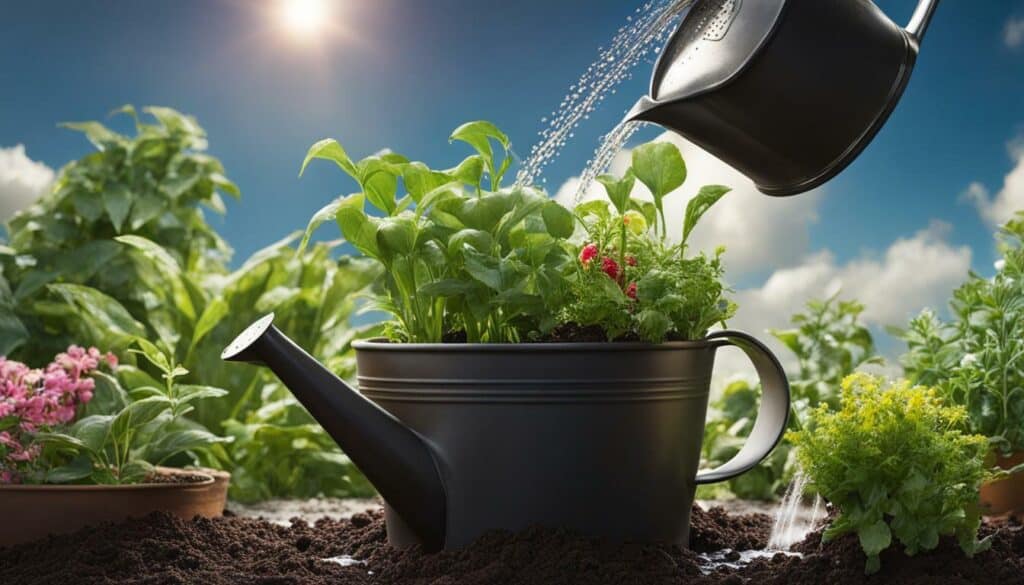
Gardening Tips:
- Water your plants thoroughly, but not too often.
- Ensure proper drainage in pots to prevent overwatering.
- Place plants near windows for indirect sunlight.
- Select plants that are suitable for your environment.
Pruning and Shaping Your Garden
Pruning and shaping your garden not only promotes healthy growth but also adds a touch of artistry to your outdoor oasis. It’s essential to trim away dead or diseased branches and foliage, which helps plants direct their energy to new growth. Proper pruning also helps maintain the shape and size of your plants, improving the overall aesthetic appeal of your garden.
When planting trees, it’s recommended to soak the roots in water for a few hours before planting. Be sure to choose a location that receives at least 6 hours of sunlight per day, and dig a hole that’s large enough for the plant’s root system. Ensure you remove any grass within a 3-foot radius, refill it with soil, and tamp out any air pockets to ensure the stability of the plant.
| Fertilizing | Mulching | Watering |
|---|---|---|
|
Fertilizing should be done with caution, avoiding the use of fertilizer in the first year as it can burn the roots. In the second year, use a balanced fertilizer with equal parts of nitrogen, phosphorus, and potassium. |
Mulching around the base of the tree helps retain moisture and suppresses weed growth. Organic mulch such as wood chips, leaves, and straw, provide additional nutrients as it decomposes. |
Regular watering is crucial, especially during dry periods. Water the plant until moisture starts to drip from the bottom of the pot. Using pots with drainage holes helps prevent overwatering. |
Pruning is necessary for stimulating growth and shaping the tree. The best time to prune depends on the region, with late fall or early winter being ideal in warmer areas. Contact a certified arborist to help identify the critical branches to prune without causing harm.
When selecting plants for your garden, consider the amount of sunlight and temperature requirements. Drought-tolerant plants are suitable for those who tend to forget watering, while moisture-loving plants are for those who prefer more frequent watering. The amount of sunlight should also be taken into account, with some plants requiring direct sunlight and others thriving in low-light conditions.
Proper watering is essential for plant health. Providing the right amount of sunlight is also important. Most houseplants prefer bright indirect sunlight, so placing them near a window without direct exposure is ideal. If you over-water the plants, the roots may get damaged, and if they don’t receive enough water, they may wilt and die.
Monitoring the plant’s condition can help determine if it’s receiving too much sunlight or water. Wilting, brown, or crispy leaves are signs of excessive sunlight, while yellowing leaves may indicate overwatering. Regular pruning is recommended to keep plants healthy and attractive so that they can continue to bring joy and beauty to your garden.
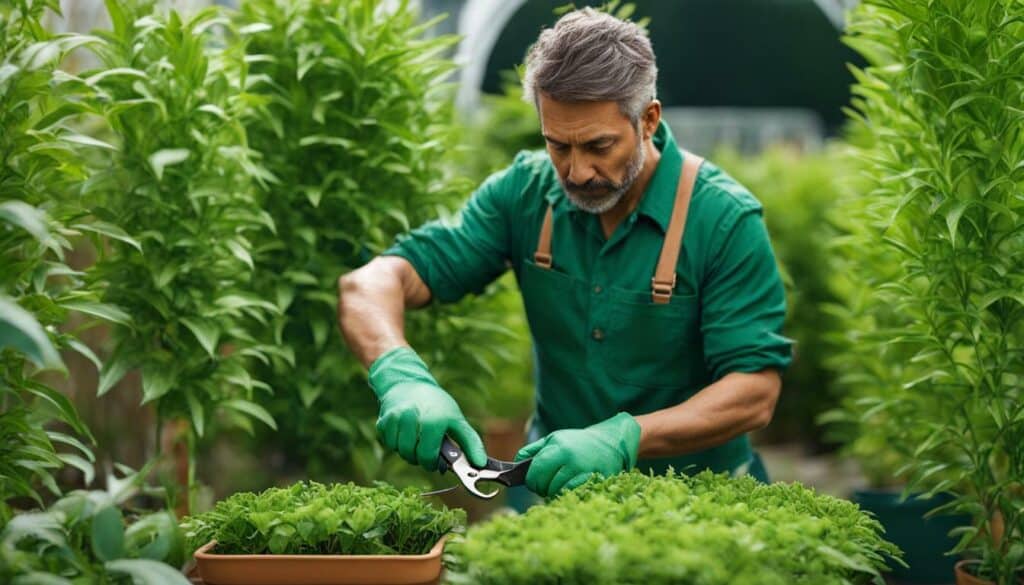
Beginner-Friendly Plants and Seed Selection
If you’re new to gardening, selecting beginner-friendly plants and seeds is a great way to start your garden on the right foot. When choosing plants, it’s important to consider the environment they will be in. Factors such as the amount of sunlight, water, and the climate will play a big role in the plant’s success.
| Plant Name | Light Needs | Water Needs | Difficulty Level |
|---|---|---|---|
| Sansevieria | Low to medium light | Allow soil to dry between waterings | Easy |
| Succulents/Cacti | Bright, direct light | Allow soil to dry completely between waterings | Easy to moderate |
| Peace Lily | Low to medium light | Keep soil moist, but not soggy | Easy to moderate |
| African Violets | Indirect, bright light | Keep soil moist, but not soggy | Moderate |
Once you have selected your plants, it’s important to know how to care for them properly. Knowing how to water and provide sunlight to your plants is crucial. It’s recommended to water plants once a week and ensure the pots have drainage holes to prevent overwatering.
Plants have varying light needs, so placing them near a window with indirect sunlight is ideal. If leaves are wilting or turning brown, it may indicate they are receiving too much sunlight. To ensure optimal growth, consider investing in a light meter to measure the amount of light your plants are receiving.
By following these tips, beginners can successfully care for their plants and select seeds that suit their environment. Growing plants can be a rewarding hobby and starting with beginner-friendly plants is a great way to gain confidence and experience.
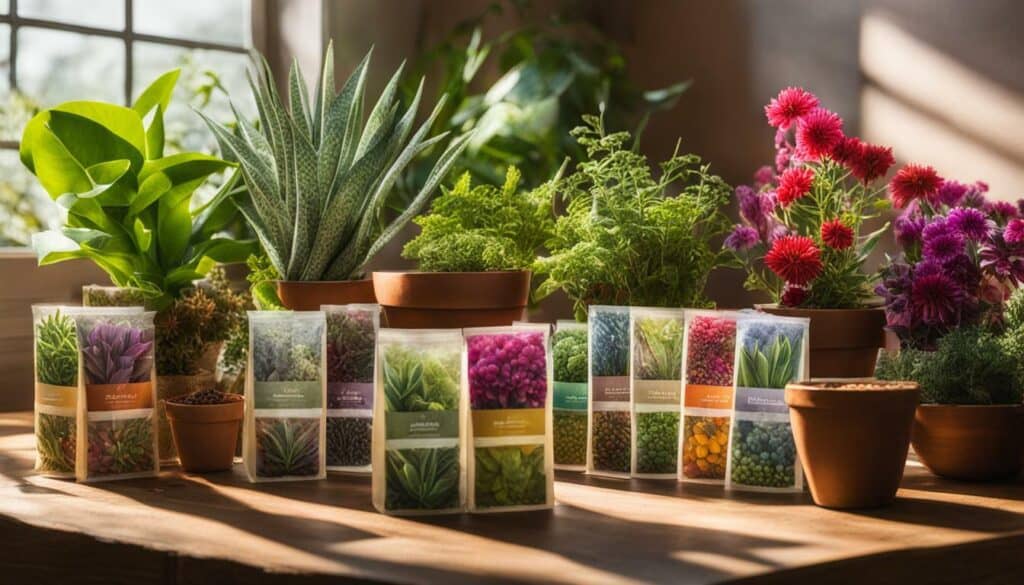
Maintaining Soil pH Levels for Healthy Plants
A crucial factor in successful gardening is maintaining the appropriate soil pH levels to support healthy plant growth. Soil pH is a measure of acidity or alkalinity and ranges from 0 to 14, with neutral soil having a pH of 7. Most plants prefer soil pH levels between 6.0 and 7.5.
One way to check soil pH levels is to use a pH meter or test kit, which can be found at your local gardening store or online. Another option is to send a soil sample to a lab for testing.
If the soil pH is too high or too low, it can lead to nutrient deficiencies and plant growth problems. To raise soil pH levels, add ground limestone or wood ash to the soil. To lower soil pH levels, add sulfur or aluminum sulfate.
It’s important to note that different plants have different pH preferences, so it’s crucial to choose plants that are suitable for your environment and maintain the appropriate soil pH levels for their growth.
Regularly check soil pH levels and make adjustments to ensure optimal plant growth.
In addition to maintaining proper soil pH levels, it’s important to consider other factors that contribute to healthy plant growth. When selecting plants, consider factors such as sunlight and temperature requirements.
Watering plants in the right amount is essential for healthy plant growth. Using a pot with drainage holes can help prevent overwatering. When watering plants, it is recommended to do it in a sink until the moisture starts to drip out of the bottom of the pot.
Sunlight is also important, and most houseplants prefer bright indirect sunlight. Placing plants near a window, but not directly next to it, is ideal. Too much sunlight can lead to wilting and browning of leaves.
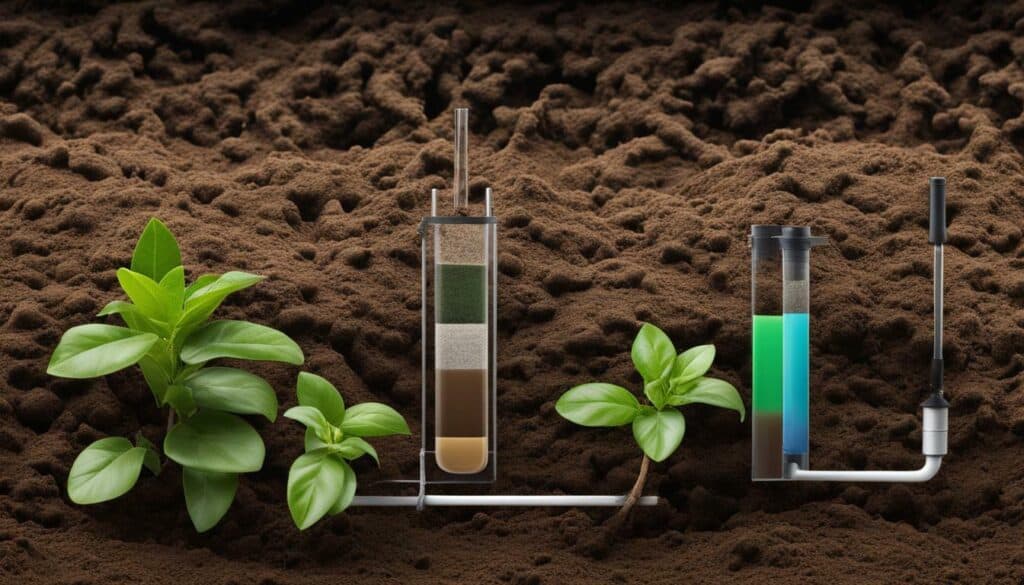
By maintaining optimal soil pH levels and considering other important factors, you can create a thriving garden and enjoy the many benefits of gardening. Happy planting!
Container Gardening for Small Spaces
If you have a small space but still want to enjoy the beauty of a garden, container gardening is the perfect solution. It allows you to grow a variety of plants, including fruits, vegetables, herbs, and flowers, even with limited space.
When selecting plants for container gardening, ensure you consider factors such as your location, the amount of sunlight your space receives, and the time you can dedicate to gardening. It’s important to choose plants that are well-suited to your environment in terms of sunlight and temperature requirements. Some good plants for beginners in container gardening include Sansevieria, succulents, peace lilies, and African violets.
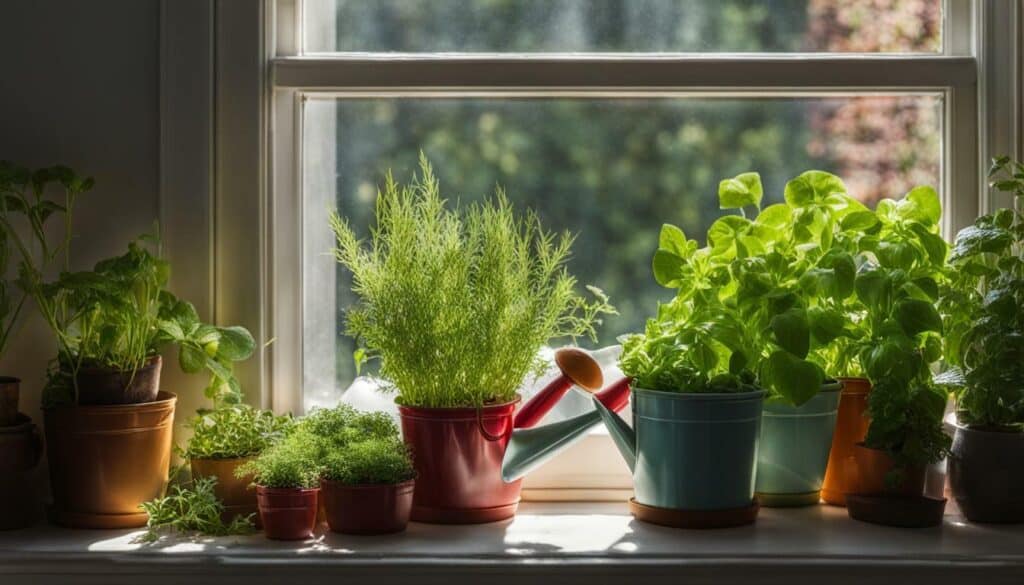
When it comes to watering, it’s essential to find the right balance. Overwatering or underwatering can be detrimental to your plants. Using pots with drainage holes can help ensure proper drainage and prevent overwatering. As for sunlight, most houseplants prefer bright indirect sunlight, so placing them near a window is ideal. Avoid exposing them to harsh direct sunlight, as it can cause leaf burn.
Container gardening allows you to experiment with unique and exciting plant combinations and arrangements. Group plants according to their water and light needs to ensure they thrive together. You can even add trellises or stakes to allow plants like tomatoes or cucumbers to grow vertically.
By following these tips and paying attention to your plants’ needs, you can successfully practice container gardening in small spaces. Whether you have a postage stamp-sized yard or just a few pots on a balcony, container gardening can help you enjoy the beauty of nature and the joy of gardening.
Answering Common Gardening Questions
As you embark on your gardening journey, it’s natural to have questions and encounter challenges along the way. Here are some common gardening questions and tips for addressing them:
- How do I choose the right plants?
Consider your location, climate, and care style. Research plants that thrive in your area and match your level of involvement. For example, if you travel often, a succulent or cactus may be a low-maintenance option.
- How much water do my plants need?
It’s important to provide your plants with the right amount of water. Most plants prefer to dry out slightly between waterings. Using pots with drainage holes can help prevent overwatering. Monitor soil moisture regularly and adjust watering schedule accordingly.
- How much sunlight do my plants need?
Sunlight requirements vary for different plants. It’s important to research the needs of your specific plants. As a general rule, placing plants near a window with indirect light is often ideal. Some plants, like succulents, may prefer bright, direct light.
- How do I care for my plants?
Regular pruning, repotting, and cleaning of leaves are important aspects of plant care. Pruning promotes healthy growth and helps prevent disease. Repotting allows plants to grow properly, and cleaning leaves helps them absorb light and maintain proper hydration. Research specific care instructions for your plants.
- What are some beginner-friendly plants?
Some great beginner plants include Sansevieria, succulents/cacti, peace lilies, and African violets. These plants are easy to care for and require minimal attention.
By following these tips, even those with a “black thumb” can become successful gardeners. Don’t be afraid to experiment and try new things. Happy gardening!
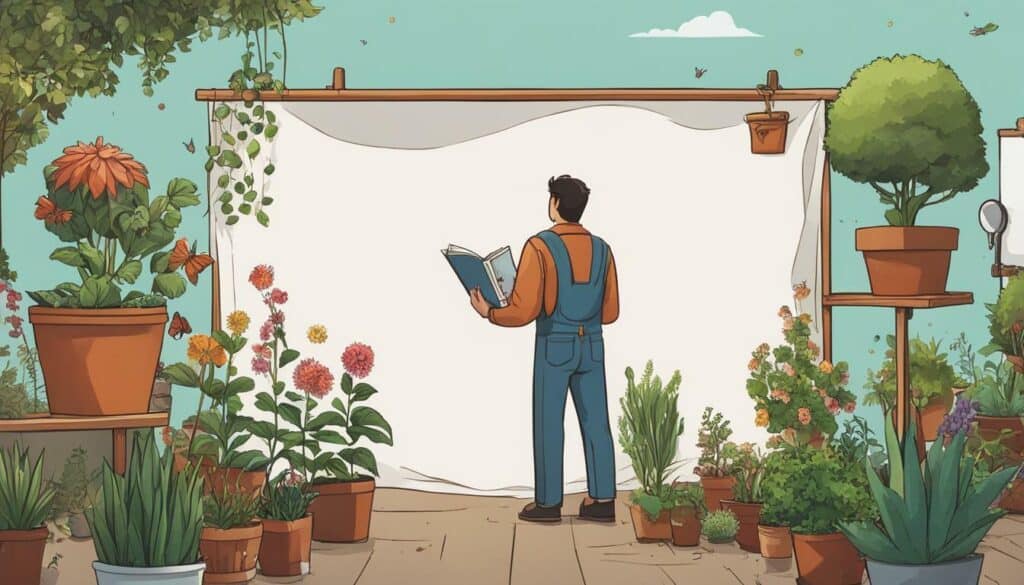
Conclusion
Congratulations! You are now equipped with the knowledge and tips to plant a beautiful and thriving garden. Remember, taking care of plants requires consideration of various factors such as sunlight, water, and the specific needs of different plant species.
To ensure your garden thrives, it is important to choose plants that are suitable for your environment and to provide them with the right amount of water and sunlight. Proper watering involves checking the moisture levels of the soil and ensuring proper drainage. Sunlight should be provided at optimal levels, avoiding both too much direct sunlight and too little light.
In addition to these basics, regular maintenance such as pruning, repotting, and cleaning of leaves is necessary to keep plants healthy. Don’t forget to maintain proper soil pH levels and consider container gardening if you have limited space.
By following these guidelines, even those with a “black thumb” can develop their gardening skills and become a “green thumb.” So, roll up your sleeves, grab your gardening tools, and get ready for a satisfying and rewarding gardening adventure!
FAQ
Q: How long should I soak plant roots before planting?
A: It is recommended to soak plant roots in water for about 20-30 minutes prior to planting. This helps hydrate the roots and promote healthy growth.
Q: How many hours of sunlight does my garden need?
A: Your garden should receive at least six hours of sunlight each day. This will ensure that your plants have enough light for photosynthesis and proper growth.
Q: How large should the hole be when planting a garden?
A: The hole should be large enough to accommodate the plant’s root system. It should be deep enough for the roots to spread out comfortably, but not too deep that the stem gets buried.
Q: Should I remove grass around the plants?
A: Yes, it is recommended to remove grass within a 3-foot radius of your plants. This will prevent competition for nutrients and water, giving your plants a better chance to thrive.
Q: How often should I fertilize my garden?
A: It depends on the type of plants you have. Generally, fertilizing every 4-6 weeks during the growing season is sufficient. Follow the instructions on the fertilizer packaging for best results.
Q: What is the purpose of mulching?
A: Mulching helps to retain moisture in the soil, suppress weeds, and regulate soil temperature. It also adds organic matter to the soil as it breaks down, improving its overall health.
Q: How much water should I give my plants?
A: It depends on the type of plant and weather conditions. As a general rule, water deeply and infrequently. Make sure the soil is consistently moist, but not waterlogged, to avoid root rot.
Q: When should I prune my garden plants?
A: Pruning times vary depending on the type of plant. In general, spring-blooming shrubs should be pruned after flowering, while summer-blooming shrubs can be pruned in late winter or early spring before new growth begins.
Q: What are some beginner-friendly plants for my garden?
A: Some beginner-friendly plants include marigolds, zinnias, petunias, and tomatoes. These plants are relatively easy to grow and maintain, making them perfect for gardening beginners.
Q: How do I maintain the soil pH in my garden?
A: To maintain optimal soil pH, you can test the soil using a pH testing kit and adjust it accordingly. Adding organic matter like compost or using soil amendments can help raise or lower the pH as needed.
Q: Can I garden in small spaces?
A: Absolutely! Container gardening is a great option for those with limited space. Select appropriate containers, use quality potting soil, and choose plants that are suitable for container gardening.
Q: What should I do if my plants have pests or diseases?
A: If you notice pests or diseases on your plants, identify the problem and determine the appropriate treatment. Organic pest control methods and disease-resistant plant varieties can help prevent and manage these issues.
Can You Provide a Step-by-Step Guide for Planting a Garden for Beginners?
Are you a beginner looking for first-time garden planting tips? Here’s a step-by-step guide to get you started! First, choose a suitable location with ample sunlight. Next, prepare the soil by removing weeds and adding compost or fertilizer. Then, select your desired plants and begin planting them at the recommended depth and spacing. Water the garden regularly and protect your plants from pests.
Source Links
- https://www.greenthumbsgarden.com/pages/planting-instructions
- https://portfarms.com/finding-your-green-thumb/
- https://plantcareforbeginners.com/articles/houseplants-101-how-to-get-a-green-thumb
- https://www.onegreenplanet.org/lifestyle/how-to-find-your-green-thumb-and-start-a-garden/
- https://www.orbitonline.com/blogs/learn-and-grow/growing-green-thumbs-a-guide-to-starting-a-school-garden-or-garden-club
- https://blog.jungseed.com/how-to-care-for-bare-root-plants-and-tips-for-plants/
- https://www.bhg.com/gardening/yard/garden-care/ten-steps-to-beginning-a-garden/
- https://sebsnjaesnews.rutgers.edu/2020/04/choosing-the-right-location-for-your-vegetable-garden/
- https://www.almanac.com/how-remove-grass-garden-bed
- https://www.finegardening.com/project-guides/gardening-basics/4-ways-to-remove-sod
- https://www.almanac.com/how-fertilize-your-vegetable-garden
- https://www.truevalue.com/diy-projects/post/patio-and-garden/fertilize-and-mulch-a-garden
- https://kidsgardening.org/resources/gardening-basics-garden-maintenance-weeding-mulching-and-fertilizing/
- https://www.longfield-gardens.com/article/how-to-water-your-plants
- https://www.hgtv.com/outdoors/gardens/planting-and-maintenance/the-proper-way-to-water-your-garden
- https://www.gardeners.com/how-to/when-to-water/8108.html
- https://stumpplants.com/journal/pruning-guide
- https://southernlivingplants.com/planting-care/shape-up-your-garden/
- https://getbusygardening.com/pruning-plants/
- https://www.almanac.com/vegetable-gardening-for-beginners
- https://extension.wvu.edu/lawn-gardening-pests/gardening/gardening-101/vegetable-gardening-for-beginners
- https://www.bhg.com/gardening/vegetable/vegetables/planning-your-first-vegetable-garden/
- https://hgic.clemson.edu/factsheet/changing-the-ph-of-your-soil/
- https://today.oregonstate.edu/news/keeping-ph-right-range-essential
- https://kellogggarden.com/blog/soil/how-to-organically-raise-ph-in-soil/
- https://swanhose.com/blogs/general-gardening/container-gardening-made-easy-a-beginner-s-guide-to-growing-plants-in-small-spaces
- https://gardenerspath.com/how-to/containers/best-ways-garden-small-spaces/
- https://www.bhg.com/gardening/container/basics/how-to-plant-a-container-garden/
- https://www.installitdirect.com/learn/common-gardening-questions/
- https://questions.gardeningknowhow.com/
- https://www.ugaoo.com/blogs/gardening-basics/most-common-gardening-questions-and-their-answers
- https://growingourown.wordpress.com/6-conclusion/
- https://content.ces.ncsu.edu/home-vegetable-gardening-a-quick-reference-guide
- https://www.betterhealth.vic.gov.au/health/healthyliving/gardening-for-children

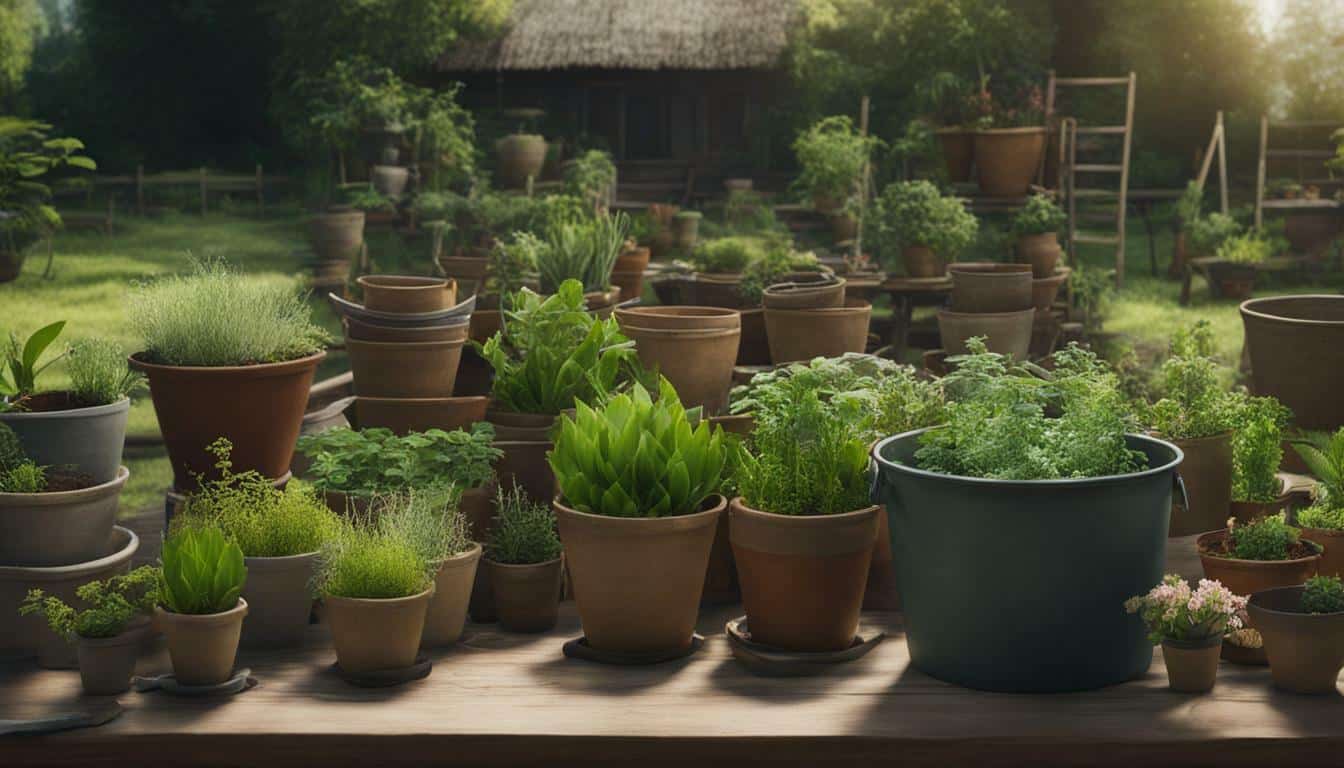



Leave a Reply